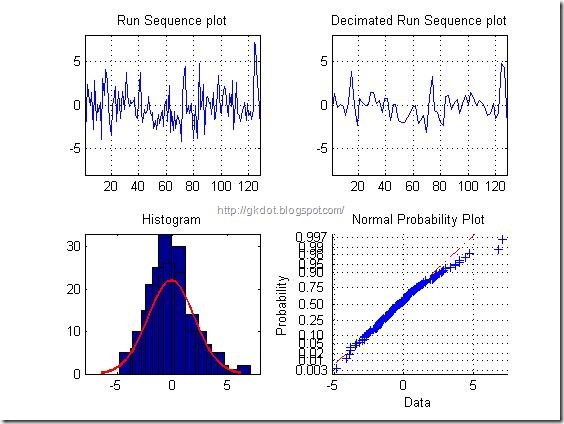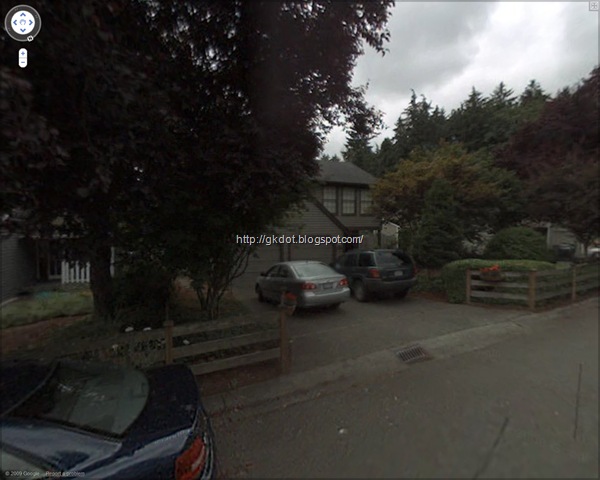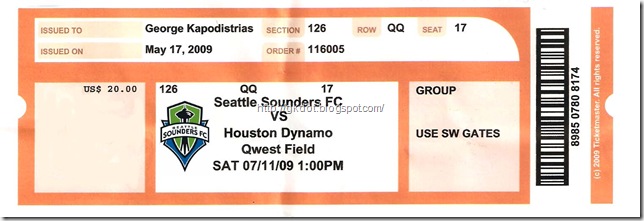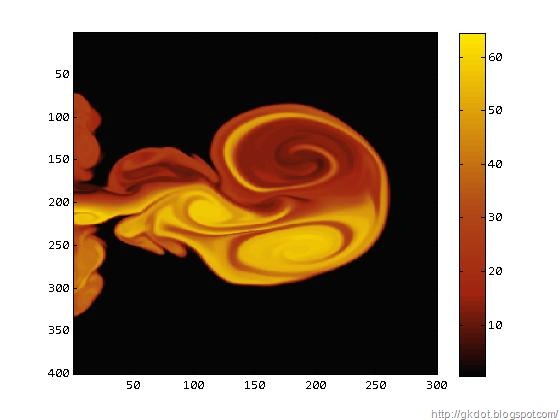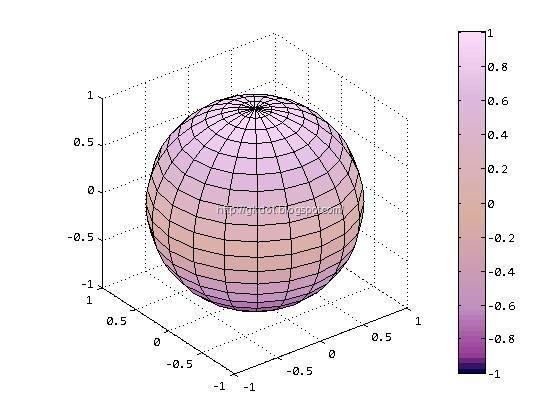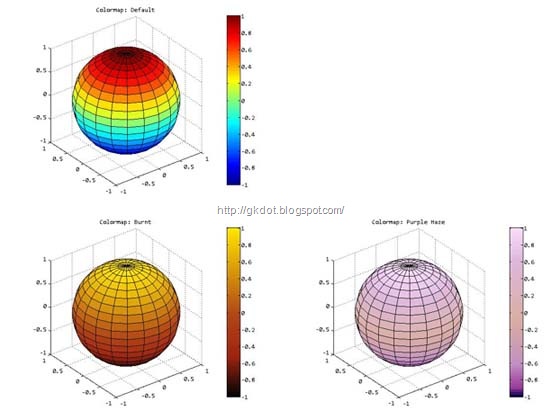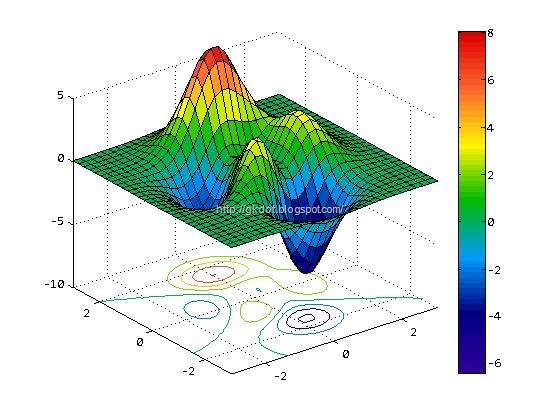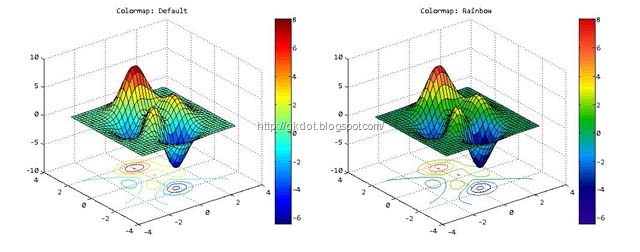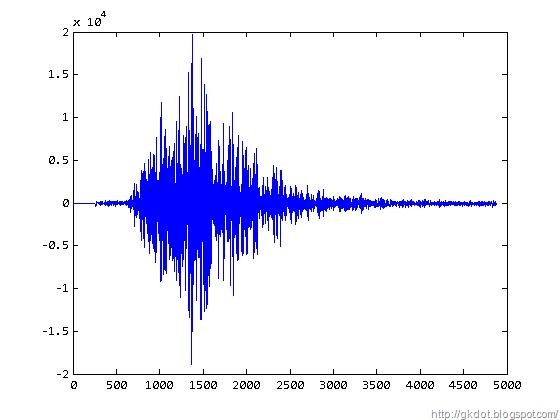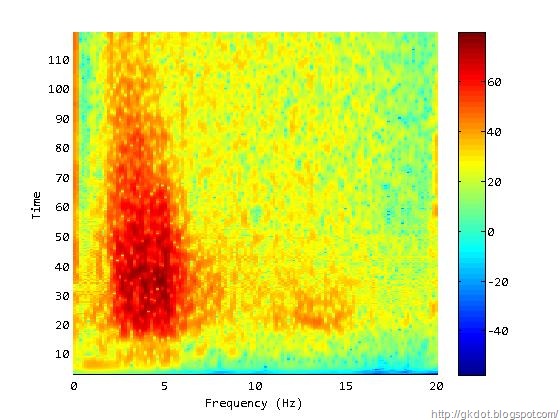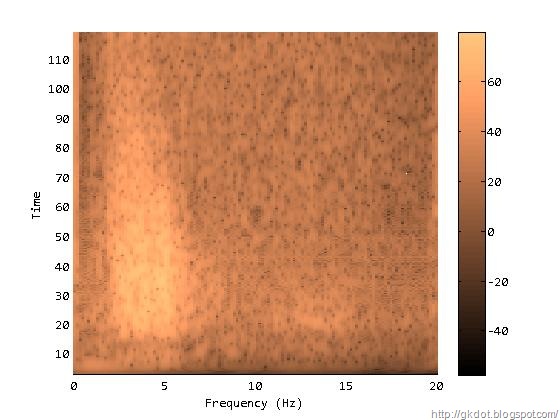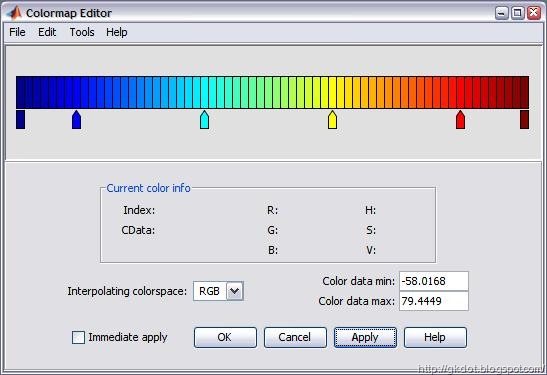Thursday, December 24, 2009
Wednesday, December 23, 2009
MATLAB gem II: An example
While I was ‘playing’ with the function fdep I decided to write a small M-file to show usage and potential problem.
The code does not produce any useful results but it is not junk either. It calls functions from a few toolboxes. Each function uniquely appears in each toolbox; No ambiguity. Then there is a parameter whose name shadows the name of a MATLAB function.
%% Quick code to test fdep
clear all
% Create 0-mean normal distribution with std = 2
Y = 0 + 2.* randn(1,128);
n = length(Y); % Length of vector n
yy = ceil( max( abs(Y) ) ); % max abs value of data
%% Run sequence plot - MATLAB
subplot(221)
plot(Y, '-')
grid on
axis([1 Inf -yy yy])
title('Run Sequence plot')
%% decimate - Signal Processing Toolbox
YY = decimate(Y,2);
subplot(222)
plot(linspace(1,128,length(YY)), YY, '-')
grid on
axis([1 Inf -yy yy])
title('Decimated Run Sequence plot')
%% Create histogram - MATLAB + Statistics Toolbox
subplot(223)
hist(Y)
hold on
histfit(Y)
hold off
axis([-yy yy 0 Inf])
title('Histogram')
%% Normal probability plot - Statistics Toolbox
subplot(224)
normplot(Y)
title('Normal Probability Plot')
%% Unrelated code: Use parameter named 'step' – MATLAB
lamda = 100;
K = 154;
step = 0;
count = 0;
for id = 1:K+1
dummy = exp(-lamda) *lamda^(id-1) /factorial(id-1);
step = step + dummy;
count = count + 1;
end
The code results in the following plot:
The code is actually 3/4 useful but that is another story.
Now, if you execute fdep from the command line on the M-file shown above the output would look like:
>> P = fdep('testCode_0912_01');
ROOT : > D:/Documents and Settings/../My Documents/MATLAB/Testing Ground/testCode_0912_01.m
1 1 : | testCode_0912_01 S 0:
------------- NO USER-DEFINED DEPENDENCIES FOUND
M-FILE : D:/Documents and Settings/../My Documents/MATLAB/Testing Ground/testCode_0912_01.m
P-FILE :
MODULE # 1: testCode_0912_01
type : SCRIPT
created : 23-Dec-2009 12:30:36
size : 1046 bytes
lines : 62
comments : 9
empty : 21
recursive : no
f/eval.. : not used
unresolved : no
calls TO : 0 user defined
called FROM: 0 user defined
calls in FILE: 20
subfunctions : 0 inside file
nested : 0
anonymous : 0
f/eval.. : 0
unresolved : 0
ML stock: 13
ML built-ins: 10
ML classes: 1
OTHER classes: 0
ML toolboxes: 4
: +1 Control System Toolbox (8.2) [control]
: +2 MATLAB (7.7) [matlab]
: +3 Signal Processing Toolbox (6.10) [signal]
: +4 Statistics Toolbox (7.0) [stats]
>>
>> P.toolbox
ans =
'Control System Toolbox (8.2) [control]'
'MATLAB (7.7) [matlab]'
'Signal Processing Toolbox (6.10) [signal]'
'Statistics Toolbox (7.0) [stats]'
>>
Mostly correct; Unfortunately it identifies the presence of the Control Systems Toolbox because of the presence of parameter step. Can’t have everything! Still, a very useful function.
Technorati Tags: MATLAB,example,usage,code,Toolbox,Histogram,fdep
Tuesday, December 22, 2009
MATLAB gem II
Normally I would not care. I would approach the code as a basic developer and write my new code as needed. I know that applying patches is not a good practice (I really dislike the idea) but my time is a lot more valuable than trying to follow calls forever. However, in this case all that code needs to be installed on more machines. And the installation is temporary. Therefore it makes no sense to buy the full-MATLAB-with-all-toolboxes-plus-Simulink-and-everything-else kind of license we typically buy. Therefore, I had to figure out what exactly that particular program is using.
So I Googled the problem and found exactly what I was looking for in the file exchange of MATLAB Central. The function contributed by us; The contribution is titled fdep: a pedestrian function dependencies finder and it is exactly what I was looking for.
The function (set of functions really) is well written and documented. It very quickly goes through a MATLAB program and displays information about users defined functions, sub-functions, MATLAB functions, toolboxes, calls, etc. Toolboxes!! There is a command line interface and a graphical one. It even comes with an HTML help file. Great work!
One caveat: At least when it comes to the toolboxes the result could be inaccurate. The reason for that is that if a developer is using a parameter name that shadows the name of an existing MATLAB function the the conflict is resolved in favor of MATLAB. For example, if a developer programmed the statement
step = 1;
then fdep will determine that step is the MATLAB function from the Control System Toolbox. That is a problem with namespace littering. And with all the toolboxes available for MATLAB pretty soon all normal dictionary words will shadow some MATLAB function. Anyway…
For my case I used the function fdep in a script that navigated through the mess of code and interrogated each function and printed back the toolbox result. The function worked quickly with few hick-ups and returned reasonable results: A few toolboxes in addition to core MATLAB. It might be that a couple of them seem suspicious but the effort required to uncover details is out of scope!
Technorati Tags: MATLAB,code,caveat,developer,fdep
Sunday, December 20, 2009
The first big snowstrom (for a second time!)
I have survived snowstorms in MA before (years ago) but it is always… interesting to wake up surrounded by a foot of snow. Of course it helps to reside in an apartment. The best thing about living in an apartment is the sense of freedom. The second best is that I do not have to clear driveways and sidewalks of all the snow!
The snowfall probably started after 1:00 am and it accumulated very quickly. By 9:00 am Reading was transformed to a winter wonderland. A cold one though; The temperature was around –5C throughout the day.
The snow was the kind of dry, fluffy snow that you cannot even use for a snowball fight, or to make a snowman (though we tried!) and it kept falling until about 1:00 pm. The maintenance people here were clearing the side walks and the snow ploughs were pushing snow out of the way for most of the day.
Everything was buried pretty deep. The Jeep is very useful during winter in MA!
Friday, December 18, 2009
FIFA World Ranking Top 20: December 2009
| Rank (previous) | Team | Points | Comment |
| 1 (2) | Spain | 1627 | |
| 2 (1) | Brazil | 1568 | |
| 3 (3) | Netherlands | 1288 | |
| 4 (4) | Italy | 1209 | |
| 5 (10) | Portugal | 1176 | That actually is about right. |
| 6 (4) | Germany | 1173 | |
| 7 (9) | France | 1117 | And that is not even close to being right… |
| 8 (6) | Argentina | 1085 | |
| 9 (7) | England | 1076 | |
| 10 (8) | Croatia | 1042 | |
| 11 (14) | Cameroon | 1035 | |
| 12 (12) | Russia | 1026 | Did not even make it to South Africa! |
| 13 (16) | Greece | 1016 | Home tie and away win against Ukraine in November (play-offs for World Cup qualification.) |
| 14 (11) | USA | 980 | |
| 15 (17) | Chile | 936 | |
| 16 (19) | Cote d’Ivoire | 934 | |
| 17 (18) | Mexico | 931 | |
| 18 (13) | Switzerland | 924 | |
| 19 (20) | Serbia | 916 | |
| 20 (19) | Uruguay | 909 |
Full table can be found at FIFA World Ranking.
Thursday, December 17, 2009
Military Could Use iPhones to Track Friends, Enemies in War
I would assume that Apple would need to make a more rugged version of the iPod to turn it into a useful tool in the battlefield (No Doubt Mission Assurance and everything.) The biggest struggle might be for Raytheon and the US government to convince the image-conscious Apple to go for something like that!
Sunday, December 6, 2009
Yahoo Issues Takedown Notice for Spying Price List
Once upon a time I respected and liked Yahoo! It seems that it has become much like the telecoms: they treat the customer like a commodity. Exploitation rules! And apparently that includes selling the privacy (whatever that might mean today) of their customers to the government (for now) and who knows who else in the future.
Such pity...
Saturday, December 5, 2009
Friday, December 4, 2009
2010 World Cup Draw
It could have been worse for Greece which was drawn into group B along with Argentina, Nigeria, and South Korea. The ‘Group of Death’ is G with Brazil (FIFA #1), Ivory Coast (FIFA #16), and Portugal (FIFA #5), along with North Korea. The softest group is F with Italy and Paraguay, New Zealand, Slovakia (all 3 ranked 30 or lower; Italy should have a very pleasant group stage.) The US should go through along with England from group C.
The groups are:
| Group A France (7) Mexico (15) Uruguay (19) South Africa (86) | Group B Argentina (8) Greece (12) Nigeria (22) South Korea (52) |
| Group C England (9) United States (14) Algeria (28) Slovenia (33) | Group D Germany (6) Serbia (20) Australia (21) Ghana (37) |
| Group E Netherlands (3) Cameroon (11) Denmark (26) Japan (43) | Group F Italy (4) Paraguay (30) Slovakia (34) New Zealand (77) |
| Group G Brazil (2) Portugal (5) Ivory Coast (16) North Korea (84) | Group H Spain (1) Chile (17) Switzerland (18) Honduras (38) |
Greece will play against:
- South Korea on June 12;
- Nigeria on June 17;
- Argentina on June 22.
History says that a win and a draw will likely get you through the group stage. Therefore, a win over South Korea (they cannot defend set pieces effectively) and a draw with Nigeria (suspect defense) should be sufficient for Greece to advance to the round of 16. All Greece needs to do is play good suffocating defense and score on quick counter attacks and set pieces. And if Maradona cannot keep his nose clean he might screw Argentina up and give us an advantage (though it would be difficult to mess up Lionel Messi and Co.)
If we advance then we will likely advance as a second seed and thus play against the first seed of group A; most likely that would be France.
GOOD LUCK GREECE!
BTW, actress Charlize Theron is magnificent!
Related articles:
GOAL.com: World Cup 2010: Group B Analysis - Argentina, South Korea, Nigeria, Greece
ESPN.com: Team analysis of the draw
FIFA.com: Group B stirs ghosts of '94
Wednesday, December 2, 2009
Ford Fiesta for the US
Finally the Ford Fiesta will be made available to the US market. The car is beautiful, successful, economic, and iconic in Europe. Not to mention that that it was the runner up for Car of the Year 2009 (losing by just one point!)
According to the official press release from Ford, the Fiesta will be available in the summer of 2010. It will have a 1600 cc 4-cylinder engine (that probably used to be an anathema for the average buyer in the US!) that delivers 119 HP. I expect (hope) that the car is going to be available with all the bells and whistles of the European version (Bluetooth with Voice Command, center console multifunctional display, MP3 & USB ready, rain sensing wipers, key free starter, stability and traction assist, parking assist sensor, etc) and definitely hope that is going to be available with a standard (manual) gearbox.
She is gorgeous. If it sells for a price similar to the Focus and VW Golf then the MSRP should be around $17000 which is OK for small family cars that appeal to young people.
Wednesday, November 25, 2009
Monday, November 23, 2009
The Past
The street view of our old Bothell WA house available on Google Maps.
We are still very nostalgic about our old house (our old life really.) Leaving behind friends and countless good memories is not easy even if we are close to family and old friends. We hope to find something equally inviting and warm to call home here in MA and start feeling a bit like we are getting closer to normalcy. We hope…
Thursday, November 19, 2009
2010 World Cup Participants FIFA World Ranking – November 2009
| Rank | Actual Rank | Team | Points | dB re #1 Points | Comments |
| 1 | 1 | Brazil | 1632 | 0.00 | Top Tier |
| 2 | 2 | Spain | 1629 | -0.01 | Top Tier |
| 3 | 3 | Netherlands | 1340 | -0.86 | Top Tier |
| 4 | 4 | Italy | 1215 | -1.28 | Tier 1 |
| 5 | 5 | Germany | 1161 | -1.48 | Tier 1 |
| 6 | 6 | Argentina | 1103 | -1.70 | Tier 1 |
| 7 | 7 | England | 1101 | -1.71 | Tier 1 |
| 8 | 9 | France | 1049 | -1.92 | Tier 1 |
| 9 | 10 | Portugal | 1042 | -1.95 | Tier 1 |
| 10 | 11 | USA | 1025 | -2.02 | Tier 2 |
| 11 | 13 | Switzerland | 961 | -2.30 | Tier 2 |
| 12 | 14 | Cameroon | 949 | -2.36 | Tier 2 |
| 13 | 16 | Greece | 921 | -2.49 | Tier 2 |
| 14 | 17 | Chile | 909 | -2.54 | Tier 2 |
| 15 | 18 | Mexico | 904 | -2.566 | Tier 2 |
| 16 | 19 | Cote d’Ivoire | 903 | -2.570 | Tier 2 |
| 17 | 20 | Serbia | 892 | -2.62 | Tier 2 |
| 18 | 21 | Paraguay | 879 | -2.69 | Tier 2 |
| 19 | 24 | Australia | 848 | -2.84 | Tier 2 |
| 20 | 25 | Uruguay | 838 | -2.90 | Tier 2 |
| 21 | 27 | Denmark | 830 | -2.94 | Tier 2 |
| 22 | 29 | Algeria | 781 | -3.20 | Tier 3 |
| 23 | 32 | Nigeria | 763 | -3.30 | Tier 3 |
| 24 | 33 | Slovakia | 758 | -3.33 | Tier 3 |
| 25 | 35 | Honduras | 754 | -3.35 | Tier 3 |
| 26 | 38 | Ghana | 746 | -3.40 | Tier 3 |
| 27 | 40 | Japan | 735 | -3.46 | Tier 3 |
| 28 | 48 | Korea Republic | 671 | -3.86 | Tier 3 |
| 29 | 49 | Slovenia | 663 | -3.91 | Tier 3 |
| 30 | 83 | New Zealand | 383 | -6.30 | Just happy to be there |
| 31 | 85 | South Africa | 381 | -6.32 | Just happy to be there |
| 32 | 91 | Korea DPR | 359 | -6.58 | Just happy to be there |
Wednesday, November 18, 2009
South Africa-bound!
Greece made it! Greece won the away game against Ukraine in Donbass Arena with a goal by Dimitrios Salpingidis in the 31st minute after receiving a dream pass from George Samaras that beat the offside trap. Like Charisteas said in an interview:
"It doesn't matter who (of us) scores, but I am very confident (one of us) will."
That scorer was Salpingidis!
A superb team effort by Tzorvas, Moras, Spiropoulos, Samaras, Katsouranis, Charisteas, Karagounis, Vyntra, Salpingidis, Papastathopoulos, Kyrgiakos, Pliatsikas, Tziolis, and Gekas.
CONGRATULATIONS GREECE!
The draw for the 2010 World Cup is on December 4. Looking forward to the opportunity to erase the bad (awful) memories of the 1994 World Cup.
BTW, the first leg (in Athens) ended 0-0.
Related Articles:
FIFA.com: Greeks return to the world stage
ESPN.com: Ukraine 0-1 Greece: Greeks provide Donetsk shock
Goal.com: Ukraine 0-1 Greece: Salpingidis Strike Sends Otto's Men To South Africa
Sunday, November 15, 2009
Leading the Way
That is the title of an article written by Graham Warwick that appeared in the Oct. 26 issue of Aviation Week & Space Technology magazine. In it Raytheon (NYSE:RTN) Chairman and CEO Bill Swanson talks about disruptive and sustaining (incremental) technology innovation. Among other things he said:
“You want an organization where that’s cultivated, but no one side suffers at the expense of the other. I have watched organizations take away resources from the incremental innovation teams to fund those that are disruptive. What you can create are haves and have-not's and that is one way to destroy innovation. You need both.”
Spot on! I too have seen organizations pouring resources on disruptive half-baked ideas at the expense of upgrade releases that actually pay the bills. A good balance is needed.
Frequently these half-baked ideas generate a lot of excitement (possibly rightly so), they become part of the near term product roadmap, and counted on for millions of $ of revenue promised to stakeholders and shareholders. The problem is that more often than not there is no straight path between a widget with blinking lights that some wizard hacked together to address basic usage on a bench and an actual product that works properly per customer requirements (complete with proper HW, SW, safety, documentation, production testing, etc.) Program delays, resource crunch, added costs, etc ensue.
The end result is that the company hurts, the employee morale suffers, and over time upper management loses every bit of credibility. Of course, the mess could be avoided if the people that are selling the disruptive technology up were in touch with reality or if the people that are pushing down to get things out faster knew the difference between feasibility and productization.
Friday, November 13, 2009
FIFA World Ranking Top 20: November 2009
| Rank (previous) | Team | Points | Comment |
| 1 (1) | Brazil | 1632 | |
| 2 (2) | Spain | 1629 | |
| 3 (3) | Netherlands | 1340 | |
| 4 (4) | Italy | 1215 | |
| 4 (4) | Germany | 1161 | |
| 6 (8) | Argentina | 1103 | |
| 7 (7) | England | 1101 | |
| 8 (9) | Croatia | 1087 | |
| 9 (10) | France | 1049 | |
| 10 (17) | Portugal | 1042 | |
| 11 (11) | USA | 974 | |
| 12 (6) | Russia | 982 | |
| 13 (15) | Switzerland | 961 | |
| 14 (29) | Cameroon | 949 | |
| 15 (18) | Czech Republic | 928 | |
| 16 (12) | Greece | 921 | Home wins against Latvia and Luxembourg in October (World Cup qualifiers.) |
| 17 (21) | Chile | 909 | |
| 18 (24) | Mexico | 904 | |
| 19 (20) | Cote d’Ivoire | 903 | |
| 20 (13) | Serbia | 892 |
Play-off game 1 against Ukraine tomorrow in Athens. Good luck!
Full table can be found at FIFA World Ranking.
It’s been a long, long time…
New state (Massachusetts), new city (Reading), new job (Raytheon), same basic subjects: Propagation and scattering of waves, beamformation, signal processing, modeling and design, and system integration.
We certainly miss our old home in WA and our old neighborhood. Sigh…
Thursday, September 10, 2009
FIFA World Ranking Top 20: September 2009
| Rank (previous) | Team | Points | Comment |
| 1 (1) | Brazil | 1604 | |
| 2 (2) | Spain | 1588 | |
| 3 (3) | Netherlands | 1376 | |
| 4 (5) | Italy | 1186 | |
| 4 (4) | Germany | 1186 | |
| 6 (6) | Russia | 1129 | |
| 7 (7) | England | 1127 | |
| 8 (8) | Argentina | 1113 | |
| 9 (10) | Croatia | 1101 | |
| 10 (9) | France | 1040 | |
| 11 (12) | USA | 974 | |
| 12 (11) | Greece | 971 | Away loss to Poland (friendly) |
| 13 (14) | Serbia | 916 | |
| 14 (16) | Australia | 907 | |
| 15 (13) | Switzerland | 898 | |
| 16 (15) | Denmark | 892 | |
| 17 (17) | Portugal | 880 | |
| 18 (22) | Czech Republic | 870 | |
| 19 (23) | Bulgaria | 860 | |
| 20 (18) | Cote d’Ivoire | 852 |
Bad omen for Greece…
Saturday, August 8, 2009
FIFA World Ranking Top 20: August 2009
| Rank (previous) | Team | Points | Comment |
| 1 (1) | Brazil | 1642 | |
| 2 (2) | Spain | 1590 | |
| 3 (3) | Netherlands | 1379 | |
| 4 (5) | Germany | 1195 | |
| 5 (4) | Italy | 1181 | |
| 6 (6) | Russia | 1161 | |
| 7 (7) | England | 1135 | |
| 8 (8) | Argentina | 1080 | |
| 9 (9) | France | 1059 | |
| 10 (10) | Croatia | 1031 | |
| 11 (11) | Greece | 1001 | No new action |
| 12 (12) | USA | 991 | |
| 13 (13) | Switzerland | 930 | |
| 14 (14) | Serbia | 925 | |
| 15 (15) | Denmark | 909 | |
| 16 (16) | Australia | 896 | |
| 17 (17) | Portugal | 881 | |
| 18 (18) | Cote d’Ivoire | 874 | |
| 19 (19) | Ukraine | 869 | |
| 20 (22) | Paraguay | 856 |
A quiet month for all teams. However, September is going to be a critical month for a lot of teams (Greece included.)
Saturday, July 11, 2009
Seattle Sounders vs. Houston Dynamo
Our very first soccer game with Jason. Soccer shirts, (blue) cotton candy, pop corn and lots of cheering. Jason got into it though he got tired towards the end of the game. It was a lot of fun for both of us!
And on top of it the Sounders won 2-1. Both goals were great. Actually the second one, scored by Patrick Ianni on a bicycle kick was amazing. No accident; The guy lowered and positioned his body perfectly to take the difficult shot (right in front of us!)
Game reports can be found here and here.
Video available from YouTube is shown below.
Wednesday, July 8, 2009
FIFA World Ranking Top 20: July 2009
| Rank (previous) | Team | Points | Comment |
| 1 (5) | Brazil | 1672 | Back on top! |
| 2 (1) | Spain | 1590 | Can’t trust them… |
| 3 (2) | Netherlands | 1379 | |
| 4 (4) | Italy | 1229 | Lost to Egypt. Enough said. |
| 5 (3) | Germany | 1207 | |
| 6 (9) | Russia | 1161 | |
| 7 (6) | England | 1135 | |
| 8 (7) | Argentina | 1091 | |
| 9 (10) | France | 1082 | |
| 10 (8) | Croatia | 1031 | |
| 11 (17) | Greece | 1001 | No new action |
| 12 (14) | USA | 983 | An amazing opportunity squandered! |
| 13 (16) | Switzerland | 930 | |
| 14 (20) | Serbia | 925 | |
| 15 (24) | Denmark | 909 | |
| 16 (29) | Australia | 886 | +13!! Belonging to Oceania helps! |
| 17 (11) | Portugal | 879 | Unfair. Should be given extra points for Ronaldo. |
| 18 (38) | Cote d’Ivoire | 874 | +20!!! For what? Beating Guinea & Burkina Faso? |
| 19 (19) | Ukraine | 869 | |
| 20 (17) | Uruguay | 860 |
You can find the latest complete list at the official FIFA website.
Sunday, June 21, 2009
MATLAB: Some useful colormaps
Using methods described in an earlier blog entry I have created various color maps over the years to display data. Some of my favorites are:
1. BURNT
>> nodes = [
5 5 5;
160 36 16;
178 73 23;
255 230 0;
];
>> index = [1 16 32 64];
2. PURPLE HAZE
>> nodes = [
10 0 80;
152 58 151;
195 145 194;
218 175 162;
222 185 222;
252 220 252;
];
>> index = [1 4 13 30 52 64];
3. RAINBOW
>> nodes = [
48 0 155;
0 0 131;
0 155 254;
0 188 0;
254 246 0;
254 98 48;
221 0 0
];
>> index = [1 12 22 33 43 54 64];
4. PRIMARY COLORS
>> nodes = [
0 51 153;
0 51 153;
0 153 255;
0 153 255;
153 204 255;
153 204 255;
0 102 0;
0 102 0;
102 204 51;
102 204 51;
153 255 102;
153 255 102;
255 255 0;
255 255 0;
255 153 51;
255 153 51;
255 51 0;
255 51 0;
];
>> index = [1 7 8 14 15 21 22 28 29 35 36 42 43 49 50 56 57 64];
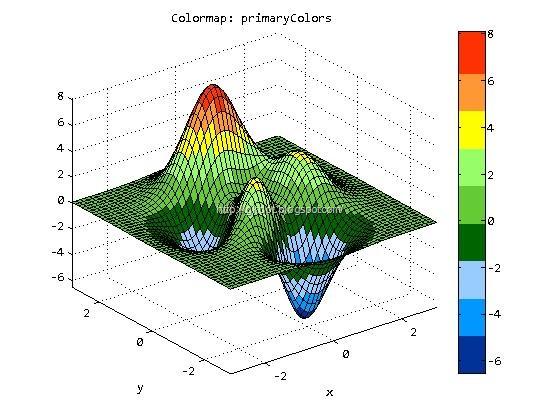
5. RED2BROWN
>> nodes = [
153 102 0;
204 153 0;
255 204 0;
255 255 0;
255 204 102;
255 153 51;
255 51 0;
153 0 0;
];
>> index = [1 10 19 28 37 46 55 64];
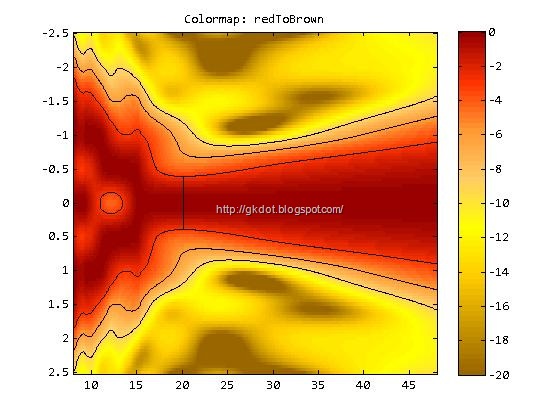
Thursday, June 18, 2009
MATLAB: Colormaps
Colormap is a function (essentially a look-up table) that maps intensity to color. It is a very useful tool because with the right color map you can quickly convey information about particular aspects of an image.
Each colormap is comprised of 64 RGB triplets, each triplet taking values from 0 to 1 (instead of the typical 0 to 255; Why is that?). For examples see table below:
| Color | Red | Green | Blue |
| White | 1 | 1 | 1 |
| Red | 1 | 0 | 0 |
| Yellow | 1 | 1 | 0 |
| Blue | 0 | 0 | 1 |
MATLAB offers a number of color maps (I think 17 on R2008b) which are well thought out. My favorite maps are: default, bone, gray, hot. However, it is very easy to generate your own color maps in order to highlight (or mask) particular aspects of an image.
Say you have an RF signal (40 MHz sampling frequency) in vector x:
>> plot(x)
You can calculate the time - frequency spectrogram of the signal using the function spectrogram (which replaced the function specgram available in older releases; All these name changes are annoying.) Also use the function colorbar to display the current colormap.
>> spectrogram(x,256,240,256,40)
>> colorbar
The spectrogram is displayed with the default colormap which is very good for general purpose display of information. To change the colormap to another predefined one you can use the function colormap. For example:
>> colormap(copper)
Too Flat. To go back to original colormap use:
>> colormap('default')
Note that to recall the default color map single quotes are need (for yet another unknown reason!)
Frequently the predefined color maps are not sufficient to generate a useful graphic in a quantitative sense. MATLAB makes it very easy to generate custom maps by offering two possibilities: The one is to use the colormap editor GUI; The other is to do a bit of typing and use your brain at the same time!
To bring up the GUI type (obviously):
>> colormapeditor
You can do some cool stuff with the colormap GUI; The help menu has some good examples. The documentation is also available on-line here (but it is frequently slooowww; prefer the local help if it is installed).
However, GUIs are not exactly my thing. I prefer to keep my fingers on the keyboard. So here is what I would do:
Define number of colors in the colormap (as mentioned earlier that is a given).
>> n = 64;
Then define color nodes in realistic RGB color-per-row vectors. The first row specifies the one end of the colormap (in this example almost black) and the last row specifies the opposite end (in this example white). The rest of the rows define colors at specific points in the colormap. You do not need to define all 64 color explicitly (though that is not out of the question). Note that MATLAB does not know the standard RGB triplets so eventually they would have to be normalized (divided by 255).
>> nodes = [
10 0 0;
255 0 0;
255 255 0;
255 255 255
];
Define the index of each node in the colormap. The first row gets the index 1. The last row gets index 64. The index of the rest of the row vectors (or RGB triplets, or colors, or whatever) will define the rest of the color assignments in the colormap by interpolating between nodes.
>> index = [1 24 48 64];
In this case, index(24) is the 24th color of the colormap and is red ([255 0 0]) while index(48) is the 48th color of the colormap and is yellow ([255 255 0]).
Now we need to define the colors for all the other indices of the color map. There various ways to do that such 1st order polynomial fit per range, spline (not very good since it will introduce unwanted oscillations and thus values out-of-range that you need to take care off but creates some unique maps), etc. A decent way to go about it is to use the function linspace between nodes to create linearly spaced vectors. A first order fit it would be good but more typing!
>> RGBMap = zeros(n,3);
>> for id = 1:size(nodes,1)-1
for jd = 1:3
RGBMap(index(id):index(id+1),jd) = ...
round( ...
linspace(nodes(id,jd),nodes(id+1,jd),index(id+1)-index(id)+1) ) ./255;
end
end
>>
Note the division by 255 to change values from 0 to 1 to accommodate MATLAB weirdness.
Invoke map by typing:
>> colormap(RGBMap)
Where, RGBMap is the name of the color map parameter used here.
In this example the colormap is essentially identical to the MATLAB-defined colormap hot (can check using the colormap editor).
A colormap that I might have liked better would be:
>> nodes = [
45 25 0;
200 70 45;
215 215 20;
225 225 110;
170 180 120;
65 105 200;
25 25 125;
];
>> index = [1 11 22 32 43 55 64];
which would result to the following cleaner image:
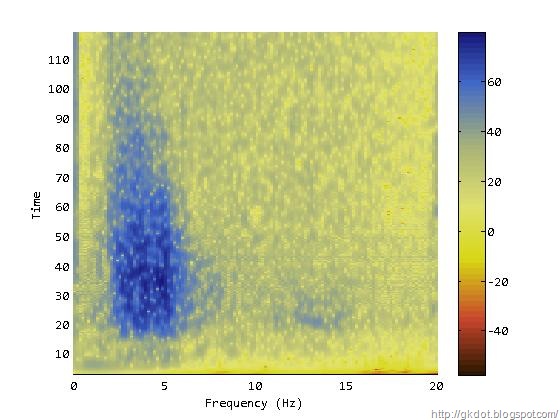
If I wanted to highlight a particular feature (a specific level) I could use:
>> nodes = [
45 25 0;
200 70 45;
215 215 20;
225 225 110;
170 180 120;
135 155 147;
0 255 0;
0 255 0;
91 124 180;
65 105 200;
25 25 125;
];
>> index = [1 11 22 32 43 47 48 51 52 55 64];
And of course I can relate the dB levels with the colormap and indices etc and produce really useful images.

